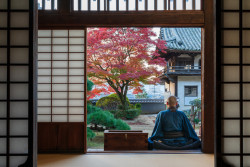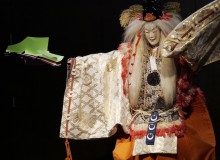
June 30, 2005
Another Country
While maintaining its cultural distinction, the Basque homeland of Bayonne offers the best of Spain and France
By Metropolis
Originally published on metropolis.co.jp on June 2005

Photos by Stephen Mansfield
In 1973, members of ETA, the Basque terrorist organization, succeeded in assassinating the Spanish prime minister, Admiral Carrero Blanco, blowing his car clean over the roof of a Madrid church.
Although nothing short of absolute separatism will do for the extremists, the Basques have come a long way since the dictator General Franco’s time. Franco reserved a particular distaste for the Basques as a race, withdrawing most of the autonomy they enjoyed before the Civil War, but failing to destroy the old patriotism that underlined it. During his long rule, the Basques maintained their own government in exile over the border in the French Pays Basque.
Since the expulsion in the 15th-century of the last Arab caliphates that ruled much of the country, Spanish rulers have been stern proponents of central government. Even so, the Basques have always been extraordinarily adept at resisting outside pressures and influences. Geography, language and distinctive racial traits have enabled them to command a good deal of autonomy while remaining nominally integrated into the Spanish and French states.
There is a growing realization, however, that it’s possible to remain nominally Spanish or nominally French without rejecting Basque identity; to enjoy, as it were, a form of dual nationality. Perhaps that’s why traveling in the Basque country, in a region with such aspirations, is a singular experience.

The steep hillsides and superabundantly green valleys are dotted with huge, alpine-roofed farmhouses called caserios, which, in the recent past, served as homes for as many as four generations of one family, plus their dependents and animals. It was in these convivial incubators of the Basque culture that the language was learned and transmitted.
The tongue, which has possible, though unproved, links to the Caucasian languages, Georgian and Circassian, is as mysterious as the Basques themselves. Philology aside, the messages on the walls of Basque cities, whether on the Spanish or French side, tell you immediately that you are in a politicized terrain. The furiously applied graffiti, the nationalist and feminist symbols, and the posters featuring Basque prisoners and lists of separatists held in temporary detention—some angrily defaced with a contrary statement or two—have a strangely ’60s agit-prop feel to them.
In Bayonne, the cultural capital of the French Pays Basque located in the southwestern department known as the Pyrenees-Atlantique, one tends to think less of politics, nationalism, or terrorist atrocities than of good living. French Basques have left a distinctive mark here, as they have done on Spanish cities like Guernica and San Sebastián. This is immediately apparent along the Rue du Rempart Lachepaillet, where stately Basque apartments, characteristically narrow, three- or four-story affairs that are built as stolidly as the rural caserios and have the same red-shuttered windows, dominate the skyline. A number of traditional houses also line the banks of the Nive River and other sections of the town, but it is in the old quarter of Petit Bayonne, the staunchly nationalistic heart of the old city, where a strong French Basque flavor is most easily sensed.
Basque sports and other forms of recreation are much in evidence in this sultry, riverine city. The most famous Basque sport, of course, is pelota, a game played by teams of between eight and ten players that may be the forerunner of squash. August’s five-day Fete de Bayonne festival includes a course des vaches (running of the cows), a parody of Pamplona’s running of the bulls, in which participants, rather than being pursued, do the chasing themselves. Because of their proximity to the Pyrenees, the Basques have always been avid climbers and walkers.
Bayonne, as you would expect, is a superb showcase for Basque cuisine. Foods associated with the region, like its salty cured hams, wood pigeon stews, eggs fried in goose fat, and trout and baby eel dishes, are easily found in the restaurants and kitchens here. Distinctive Basque beverages are farm ciders and beers; an acerbic “green” wine called txacoli; and izarra, a potent liquor made from dozens of painstakingly blended and fermented herbs. In typical Basque fashion, izarra is prepared according to a recipe that remains a carefully guarded secret—one its manufacturers have no intention of revealing.
Bayonne, San Sebastian, the French resort of Biarritz, and the Spanish town of Guernica are the best-known centers in the Spanish and French Basque country. Road, train and air links conveniently connect these locations to other European cities. Spring and summer are the best times to visit. The region can be quite cold, even snowbound in the winter. The delightful village of Saint Jean Pied de Port, some 30km from Bayonne, is well worth visiting as a typical French Pyrenees village. In Bayonne, the 3-star Hotel Loustau (tel: 34-59-55-1674) is one of the best places to stay, with rooms in the ¥8,000-¥12,000 range. The Hotel Paris-Madrid (tel: 34-59-55-1398), run by an English-speaking couple, has clean rooms with satellite TV for ¥4,000. The Pension Loinaz (tel: 34-59-42-6714), in the old quarter of San Sebastian, is excellent value at around ¥3,000 for simple singles and doubles.
[geo_mashup_map]







